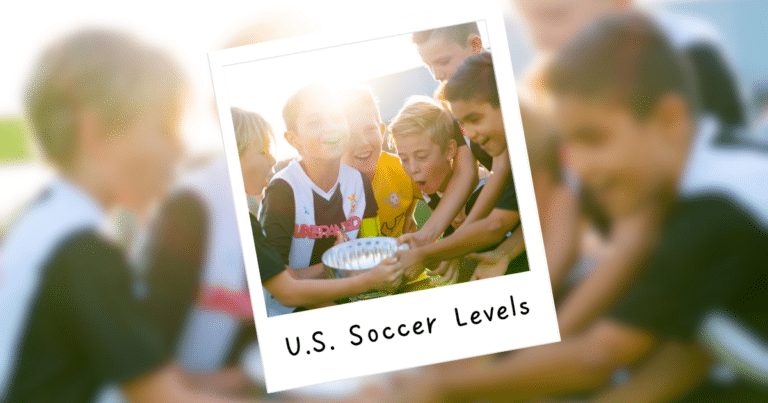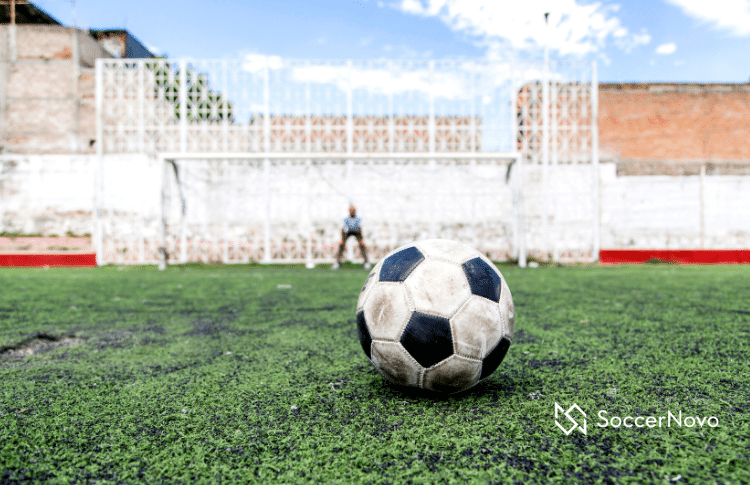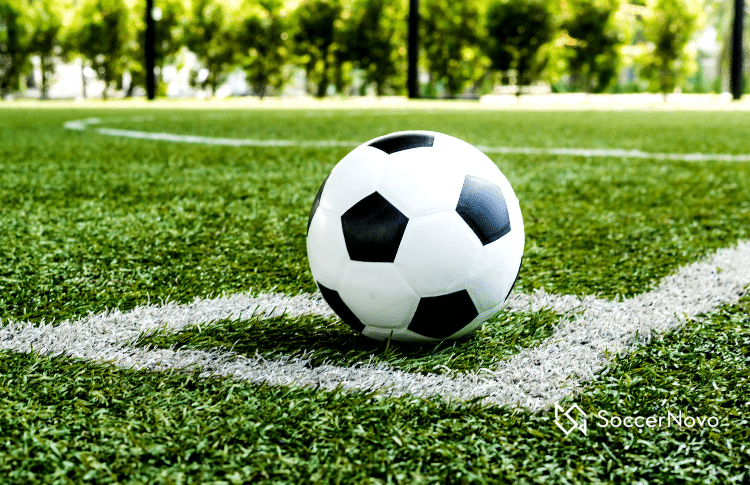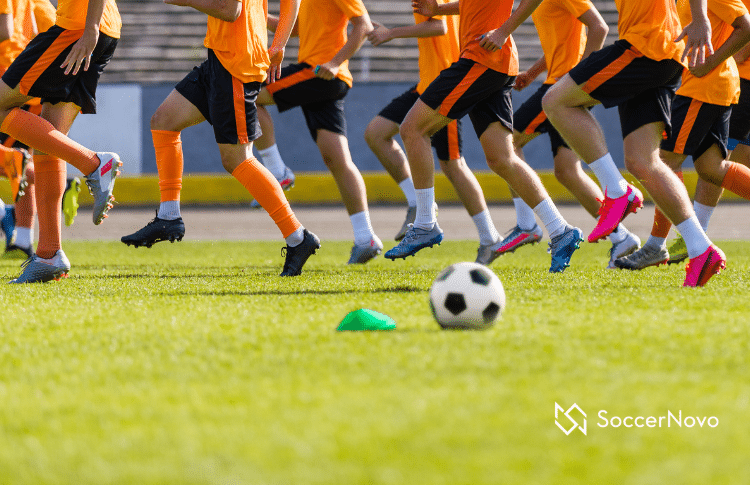Panenka Soccer Penalty Kick
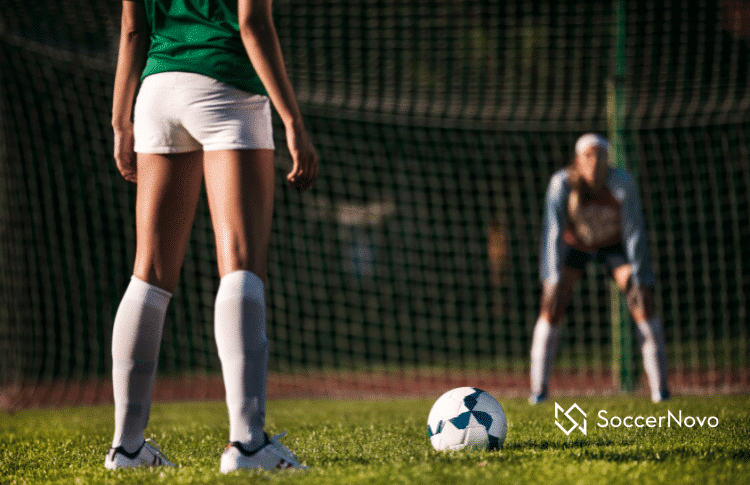
Panenka penalty kick is a technique used by some of the world’s greatest players to score goals and win important games (in fashion).
What exactly is a panenka penalty kick, and how does it work? In its basic terms, a panenka penalty kick is a type of penalty kick in which the player taking the kick chips the ball softly down the middle of the goal, often causing the goalkeeper to dive in one direction or the other.
The technique relies on deception and nerves of steel, as the player taking the kick must be confident enough to attempt such a risky move in a high-pressure situation.
Why the funny name? This technique is named after Antonin Panenka, who famously used it to score the winning goal in the 1976 European Championship final.
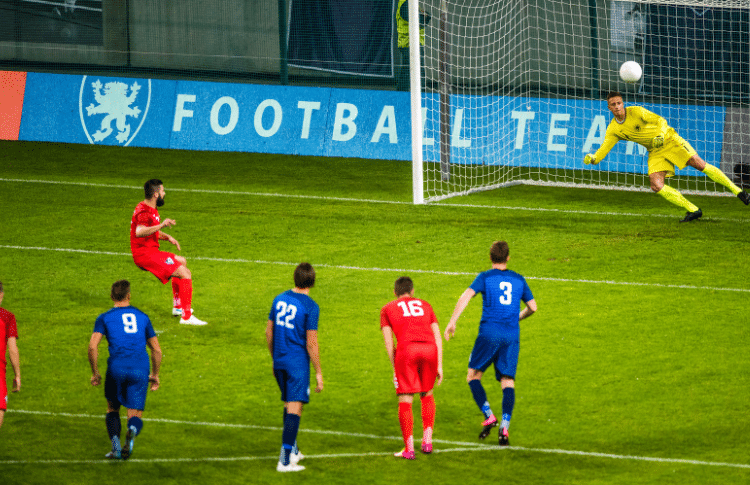
If you’re reading this as a youth soccer player or parent of a player, I would advise NOT to do this move! It’s a very challenging shot with a high risk of the goalie securing it.
For those interested, let’s dive into this style of penalty kick some more…
Execution of Panenka Penalty Kick in Soccer
Here’s what you need to know to execute a successful Panenka penalty kick.
To execute a Panenka penalty shot in soccer, here are the steps to follow:
- Position the non-kicking foot slightly to the side and behind the ball, ensuring proper balance.
- Make eye contact with the goalkeeper and look left or right in the moments leading up to the shot. This subtle interaction might influence the goalkeeper’s anticipation, playing a crucial role in the success of your Panenka.
- Decide on a target and aim for the center of the goal.
- Lightly touch the ball underneath with the area of your cleat where the inside of your big toe is, causing the ball to rise and fall within the center of the goal, deceiving the goalkeeper who most likely will have committed to a dive away from the center.
- Try to keep your leg straight and don’t follow through after you strike the ball.
Technique
The Panenka penalty kick involves chipping the ball straight down the middle of the goal while the goalkeeper dives to one side. To execute this technique, you need to make it look like you’re going to shoot to one side of the goal. This will cause the goalkeeper to dive in that direction, leaving the center of the goal wide open.
To chip the ball, you need to make contact with the bottom of the ball using the inside of your foot. This will cause the ball to lift into the air and then drop down into the goal. It’s important to strike the ball with just the right amount of force to get it over the goalkeeper but not too high that it goes over the crossbar.
Timing
Timing is everything when it comes to the Panenka penalty kick. You need to wait until the goalkeeper has committed to diving before you chip the ball. If you do it too early, the goalkeeper will be able to adjust their position and make the save. If you do it too late, the goalkeeper will have time to recover and stop the ball.
The best time to use the Panenka penalty kick is when you’re confident that the goalkeeper will dive to one side. This could be because they’ve been diving to the same side all game or because they’ve shown a tendency to dive early.
Risk and Reward
The Panenka penalty kick is a high-risk, high-reward technique. If you execute it successfully, you’ll look like a hero and your team will score a goal. However, if you miss, you’ll look foolish and your team will lose a valuable scoring opportunity. For youth players, the cons outweighs the pros.
This would be more of a penalty shot in the school yard or at training. If you are taking a penalty shot in a game, it’s best to just pick a side and kick with accuracy and power.
Famous Panenka Penalty Kicks
UEFA Euro 1976 Final
Panenka’s famous penalty kick in the Euro 1976 final against West Germany is widely regarded as the first time the technique was used in a major international tournament. With the score tied at 2-2 in the shootout, Panenka stepped up to take the decisive penalty kick.
Instead of blasting the ball to either side of the goalkeeper, he calmly chipped it straight down the middle, leaving the keeper stranded and securing the championship for Czechoslovakia.
This left players, coaches, and fans in awe. And, this jump started some notable players trying the shot.
Zinedine Zidane in 2006 World Cup Final
Another famous Panenka penalty kick was taken by Zinedine Zidane in the 2006 World Cup final between France and Italy. With the score tied at 1-1 in extra time, France were awarded a penalty kick.
Zidane, who had already scored a penalty earlier in the match, stepped up to take the kick. Instead of blasting the ball to either side, he chipped it down the middle, leaving the Italian goalkeeper Gianluigi Buffon with no chance.
Criticism and Controversy
Missed Panenka Kicks
While the Panenka penalty kick can be a spectacular move when executed correctly, it is not without its risks. One of the biggest criticisms of the Panenka is that it can make the taker look foolish if the goalkeeper does not fall for the trick. When a Panenka is missed, it can be a humiliating experience for the player and can even cost their team the game.
Sportsmanship Debate
Another controversy surrounding the Panenka penalty kick is whether it is a fair or sportsmanlike move. Some argue that the Panenka is a form of deception and that it is unsportsmanlike to trick the goalkeeper in this way. Others argue that the Panenka is a legitimate part of the game and that it is up to the goalkeeper to anticipate and defend against it.
One notable incident that sparked this debate was when Andrea Pirlo used the Panenka to score a penalty kick against England in the quarterfinals of the 2012 European Championships. Some critics argued that Pirlo’s move was disrespectful to the English team and showed poor sportsmanship.
You can tell Pirlo didn’t do it out of disrespect but it was more of a strategic move as seen in the following clip.
Final Thoughts
The Panenka penalty kick is a technique that has had a significant impact on soccer history. It was invented by Antonín Panenka, who used it to score the winning goal in the UEFA Euro 1976 final.
Since then, the technique has become famous and is now used by players all over the world. It requires a player to have the confidence and courage to take on the responsibility of scoring the winning goal.
Although effective in some cases, I think players are better off simply placing the ball in one of the corners during a penalty kick. I don’t know the exact success rate but I would imagine the panenka is lower than a normal PK shot. Additionally, your coach may be wondering what the heck you are doing if you take a panenka and miss.
So, at the end of the day, just shoot your penalty shots with power and accuracy!
Frequently Asked Questions
What are the risks of attempting a Panenka penalty kick?
How can a player successfully execute a Panenka penalty kick?
Are Panenka penalty kicks legal in soccer?
What is the difference between a Panenka penalty kick and a chip penalty kick?

Written By: SoccerNovo
SoccerNovo is an independent youth soccer media brand built to help parents, players, and coaches better understand the game and the pathways available in U.S. soccer. Our mission is to make youth soccer simpler, clearer, and more accessible for everyone involved in it.
Let’s connect


